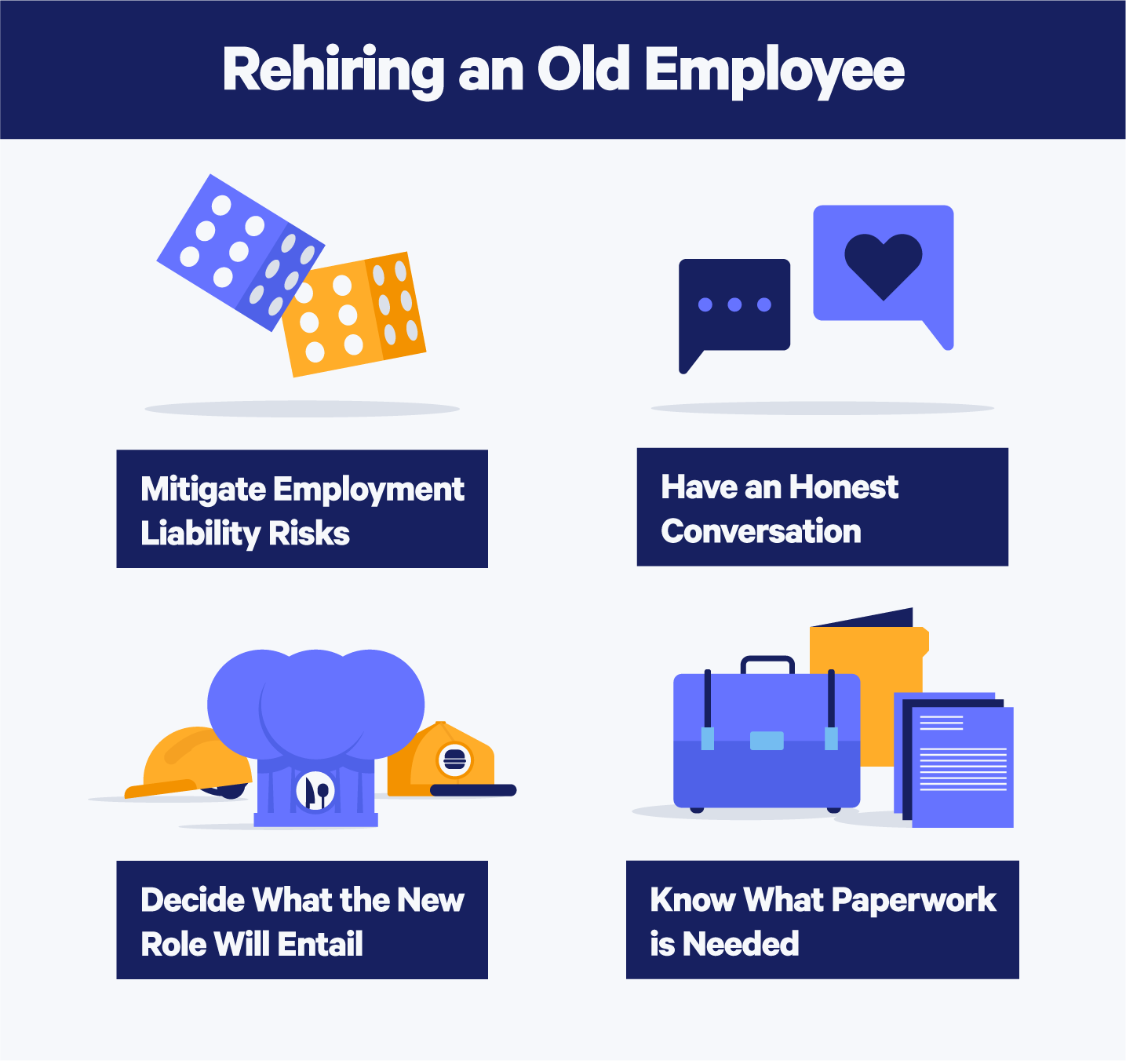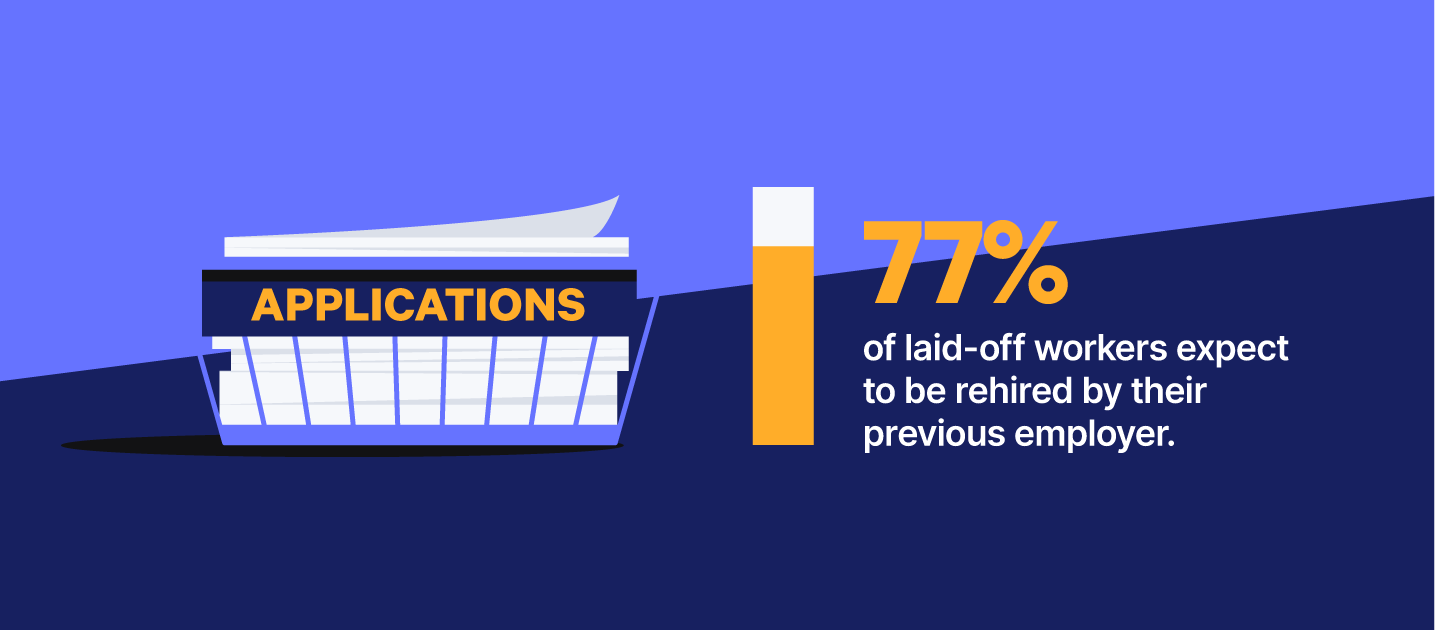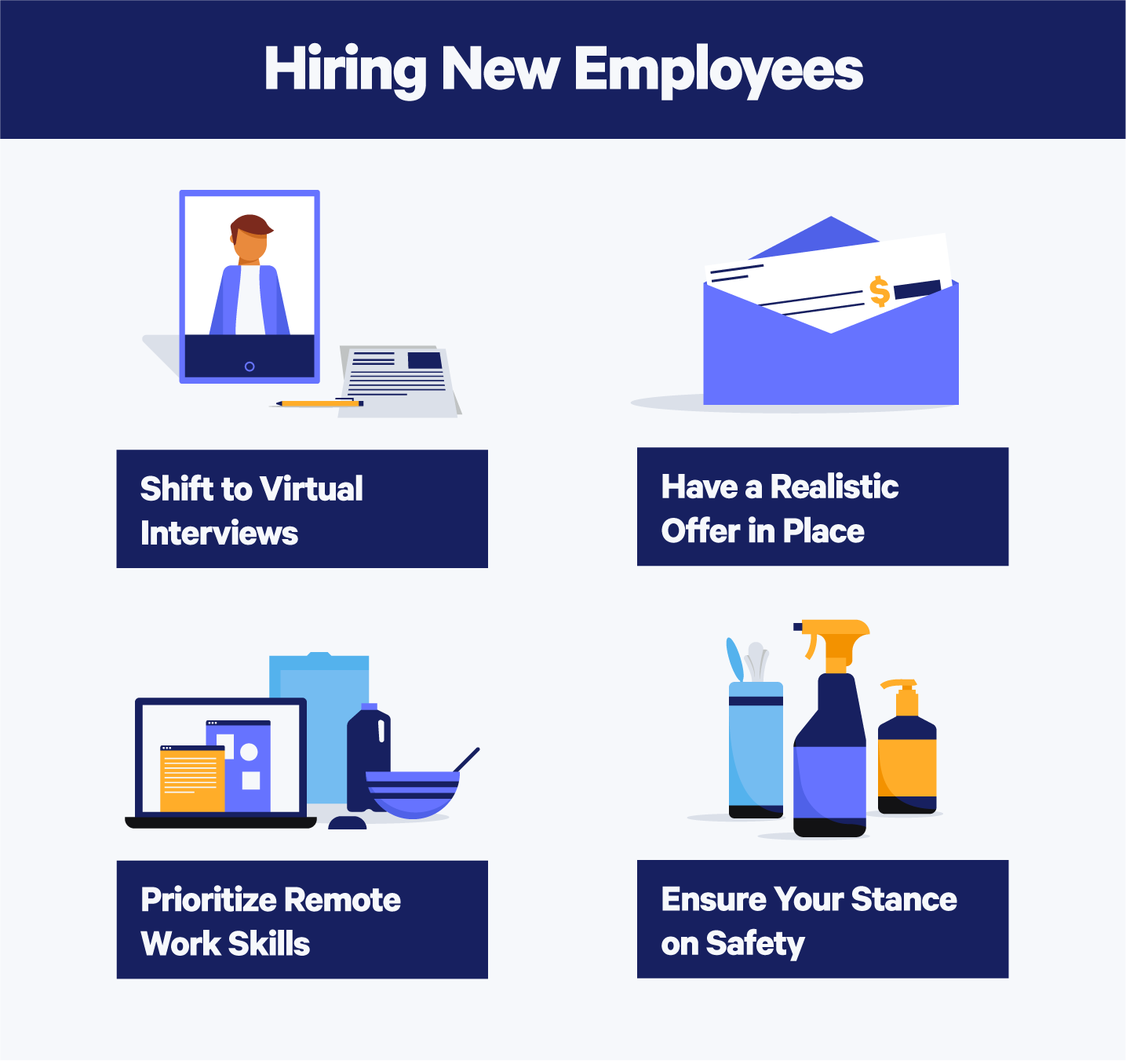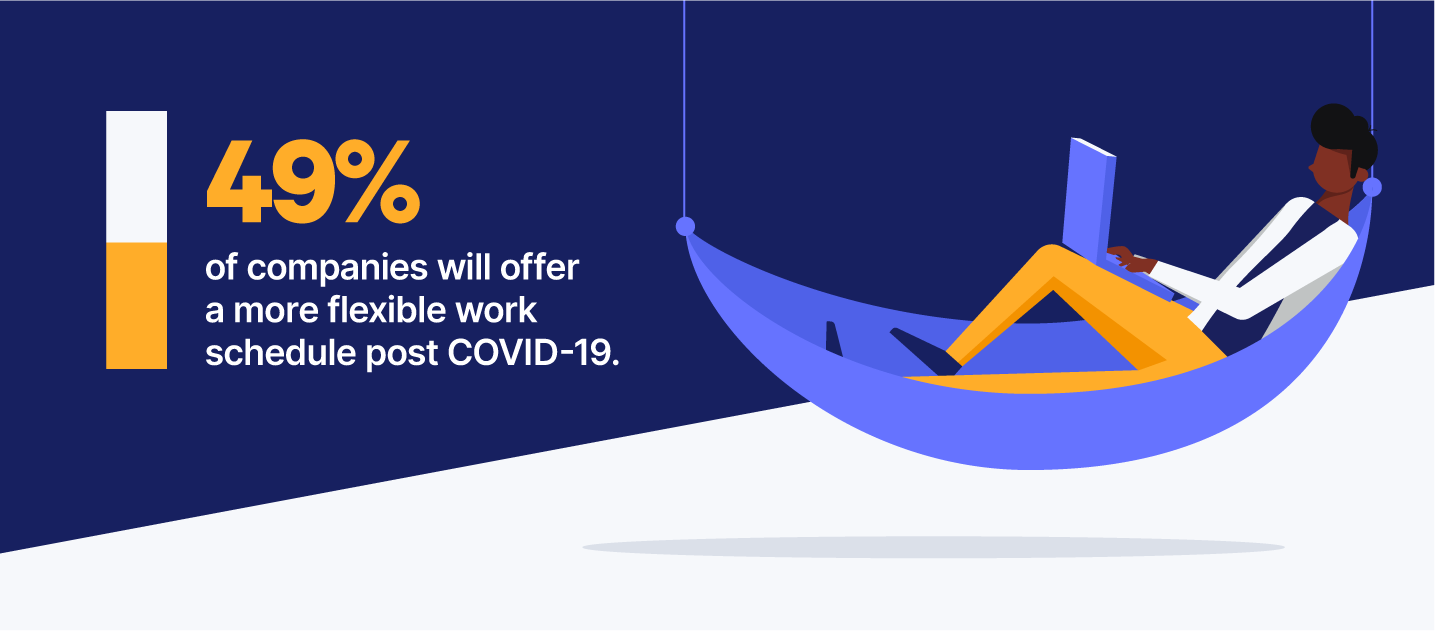
Table of Contents
As states ease their COVID-19 shutdown mandates and companies begin to reopen their doors, you’re probably thinking — what’s our next step? While three out of every four startups have been severely affected by the crisis, 12% have seen their revenue increase by 10 percent or more, particularly in B2C spaces. If you run a B2C business, you might want to check this guide by WellnessLiving on how to keep in the green during this global crisis.
We’re living in a “new normal.” Following mass layoffs, some industries are starting to face demand again and startups are looking to bring team members back on board. If you’re ready to start rehiring, it’s normal to have concerns about what the process looks like. Everything from interviews to onboarding will look different as a result of COVID-19. Not only are there legalities in rehiring former employees, but now more than ever, there’s more focus on flexible work practices and keeping health top of mind.
In this guide, we’ll walk you through how to rehire after COVID-19 to be sure your startup is covered from EPLI risks, and most importantly, that your employees stay healthy and safe.
Rehiring a Former Employee
The benefits of rehiring a former employee are tenfold: they know your biz and how to get the job done. You’ll not only save on training, but if it’s an employee you trust, you’re taking less of a risk by starting with someone new. So what could go wrong?
Rehiring an employee who was let go or furloughed is not always a straightforward process. Remember to proceed with empathy and compassion when rehiring during difficult times. There are also logistical questions and legal know-hows to consider before you reach out to rehire.

1. Mitigate Employment Liability Risks
If you faced budget cuts or operational changes, it may not be realistic to invite back all of the employees that were let go (even if you wish you could). Evaluate and document the legitimate reasons for choosing which employees will return. These reasons could include seniority, operational needs, or documented performance issues. Any potential risk of COVID-19 complications should not be used in this decision-making.
With valid documentation before and during the hiring process, you can protect your startup from any potential EPLI claims. Rehiring certain employees over others without reason can put your company at risk for hiring on a “discriminatory basis,” even if it wasn’t intended.

Analyzing Insurance Costs for Startups
Embroker Vertical Insurance Index
How much are you paying for your insurance? Are you purchasing the right policies? Find out what founders are doing, and the trends that you may not have seen.
2. Have an Honest Conversation
Layoffs are not easy — nor are the conversations that follow. Have an open and transparent conversation with your former employee about how they feel about the recent changes.
Employees who were let go unexpectedly could be emotionally drained or stressed. They may also harbor resentment. Communicate the value they would bring to the team and confirm that they feel comfortable to return. If they bring back a toxic attitude, rethink if it’s a good mutual decision.
Below are some tips on having a successful conversation:
- Be thoughtful about your mode of communication: Whether it’s 1-on-1, video call, or a phone call, make it personal and private.
- Listen to their concerns: Hear out your former employee if they’re frustrated or any other emotions they’re feeling during a difficult time.
- Use empathetic language: Being let go is a sensitive subject and can be difficult to recover from. Relate to the situation and find common ground.
3. Figure Out What the New Role Will Entail
Every startup is unique, especially during uncertain times. Has your organizational structure changed as a result of COVID-19? Offer full transparency of the position you’re rehiring for — whether that means an entirely different role from their previous position, added responsibilities, or reduced pay.

Even if it’s a small shift, disclose this early on. Work location and schedules could also look different if your team shifted to be fully remote. Make sure you’re on the same page about what’s changed and set expectations to avoid conflict down the line.
4. Know What Paperwork is Needed
Even when rehiring an old employee, they should be given most of the same paperwork as a new hire. If it’s within three years that your employee completed their initial Form I-9, they’re not required to fill out a new form.
In addition to the I-9, this includes things like the W-4, Employee Withholding, Workers’ Compensation, Disability Insurance, Paid Family Leave, etc. Your employees should also be given the opportunity to make changes to their benefits selections or direct deposit.
Hiring New Employees
There is always the chance that your former employees decide not to return. They may have found another position or decided to go another route with their career. If you’re looking to hire new employees, streamline the process with these tips in mind to evolve as the crisis does.

1. Shift to Virtual Interviews
First and foremost, put the health of your team and candidates first. Even though states are reopening, check the CDC updates and your state-mandated order for direction on what interview process is safest at the time.
Use the interview option that works best for you and the candidate. If this means you conduct virtual interviews via Zoom, Skype, or Google Meet, customize the email template below to invite potential candidates.
Email subject line: Video interview with [Startup name] for the [Job title] position
Hi [Candidate name],
Thanks for applying to [Startup name]. I’m the [your position/hiring manager] at [Startup name].
Because our team is fully remote due to stay-at-home orders, I would like to schedule a video call with you to discuss your application for the [Job title] position.
Would you be available for a short introductory video call [add time frame]?
Once we decide on a date and time, I’ll send you a link so that you can join the call from your computer.
Looking forward to hearing from you,
[Your name and signature]
Always treat a virtual interview as seriously as you would if it were in-person.
Remember to:
- Do your research: Prepare your interview questions or talking points as you would any other meeting.
- Check your connection: Test your video call prior to the interview to avoid tech issues.
- Dress appropriately: Yes, it’s time to ditch the sweatpants.
- Make eye contact: Even though you’re chatting through a computer, engage as you would in person.
- Avoid distractions: Mute any email or Slack notifications on your computer and set your cell to do not disturb.
- Send a follow up: Thank the candidate for their time and offer any next steps.
If you record the interview, act in accordance with your state laws, since some require you get the candidate’s consent first.

2. Have a Realistic Offer in Place
With so much uncertainty in the air, candidates want to have no reservations about jumping into a new role. Whether it’s a temporary position to fill demand or a permanent role that will transition to in-office, be conscious of what you offer, and if it may shift in the near future.
Competitive pay and benefits should still be top of mind. If you expect your team to shift from remote to in office, communicate this in the interview process so everyone is on the same page.
3. Prioritize Remote Work Skills
As a result of the pandemic, companies have had to pivot and adapt — with a massive shift towards remote work. Even if your startup isn’t planning to be fully remote forever, there is a learning curve to working from home full time.
Seek out these skills in potential employees to ensure the transition is seamless and productive. If you’re hiring for a full-time remote position, look for previous remote work or experience.
4. Ensure Your Stance on Safety
It’s your responsibility to create a safe work environment and practice social distancing measures across your team. Communicate to your team or potential candidates what your startup is doing to put their safety first. It’s a time of high anxiety, so employees may have questions and concerns as things progress.
One example is to align with your HR or ops manager to send out a weekly “What’s New” email blast to the team. This can contain updates around COVID-19, company changes in terms of revenue, or any other relevant information the team should be aware of. As the world shifts, maintain trust, openness, and transparency with your team.
Post Interview and Training
If your team is full-time remote, training or onboarding might look a little different than normal. While pre-COVID onboarding may have included in-person meetings and sessions, many have shifted to virtual.

1. Spread Out the Onboarding or Training
Onboarding helps an employee feel included from day one. It sets the tone and lays the foundation for the rest of their experience working at your startup.
During a crisis, allow flexibility in training by spreading out what would have been a one-day session over multiple sessions. This not only gives your new hire ample time to learn new processes but also places less stress on your hiring manager or team who’s leading the training. Consider using the same video platform you used for the interviews so your new hire is familiar and comfortable using it.
Adapt to what works best for your startup during this time. Nextdoor, for example, repurposed their onboarding platform (a system with education and online resources) to turn it into a work-from-home resource center. Make onboarding resources accessible and easy to reference.
2. Focus on the New Hire Experience
Adapting to a virtual work environment isn’t always an easy transition, which is even more reason to add a personal touch to the new hire experience. Give your new team member time to settle in, especially during a crisis when stress levels may be higher than usual. Schedule weekly check-ins with an assigned mentor or manager to see how they are adjusting.
Share your startup’s roadmap to give new hires a deeper understanding of your team’s communication style, priorities, or values. For example, Asana offers Conscious Leadership Group training to help the team “approach conflicts and provide everyone with a shared vocabulary to use when communicating with their colleagues.”
3. Emphasize Your Startup Culture and Values
Being unable to onboard someone face-to-face can feel impersonal. It’s even more difficult to display your company culture without being able to interact in person. Or, in your office where the cold brew and kombucha is on tap.
However, your startup’s culture may have been what attracted a candidate to apply in the first place. Keep your company mission, values, and vision front and center during the onboarding process.
Here are some ideas to implement this:
- Remote orientations: Set up initial meetings during a new employee’s first few weeks with different team members across departments.
- Virtual coffee meetings or happy hours: Employees can get a feel for the team and their personalities with more casual, relaxed meetings.
- Culture ambassador: Assign an “ambassador” to put in the extra effort to make a new hire feel welcome and help explain the company culture.
This looks different for every startup. Hotjar, for example, uses a Slack application called Donut to randomly pair up two team members for a 30-minute virtual coffee break chat. Virtual team building activities can help employees feel more engaged and lead to better retention — despite the required stay at home orders.

4. Encourage Open Feedback (and Implement)
Regular check-ins, clear goal setting, and encouraging open feedback are key in a virtual work environment. Learn how you can improve from a new hire who just went through the process, then implement that feedback in an actionable way.
There are many ways to encourage feedback while working remotely:
- Set up an anonymous feedback form that gets sent directly to your inbox.
- Run a team survey for ideas on how to improve processes.
- Encourage micro-moments to connect with the founder or CEO, like monthly coffee chats.
- Create mentor sessions pairing new hires with long-tenured employees.
URX, for example, created Contrarian Office Hours every Friday for the whole team to “share ideas, air grievances, ask questions, and say outright that they think things should be done differently. The word ‘contrarian’ was chosen specifically to draw out arguments and hot button topics.”
Hiring Resources: Health and Safety
News and updates related to the coronavirus pandemic are always changing. When rehiring, always factor in compliance with federal, state, and local laws.
Consult with your legal counsel if you have any questions about rehiring. Below are some additional resources to check updates and keep health and safety top of mind for your team.
- CDC: Coronavirus Disease 2019 (COVID-19): Businesses and Workplaces
- OSHA: Guidance on Preparing Workplaces for COVID-19
- OSHA: COVID-19: Control and Prevention
- EEOC: Pandemic Preparedness in the Workplace
Change is necessary for growth — especially at a startup. With the shifts caused by the pandemic, you have the option to “re-do” your hiring or training process. If you’ve wanted to rework job descriptions or implement new training sessions, but couldn’t seem to find the time, this is the perfect opportunity. Once you start the rehiring process, consider employment practices liability and employee benefits coverage to be sure your startup is protected in any situation.
Related Articles
What Is Blind Hiring? (How to Implement It)
4 min readBlind hiring is a process used to block out a job candidate’s personal information that could influence or “bias” a hiring decision.
How Will COVID-19 Impact Workers Compensation Insurance?
4 min readThe impact on your workers compensation program will primarily depend on your compliance with regulations, communication with employees, and consistency in adjusting to new operational guidelines.


